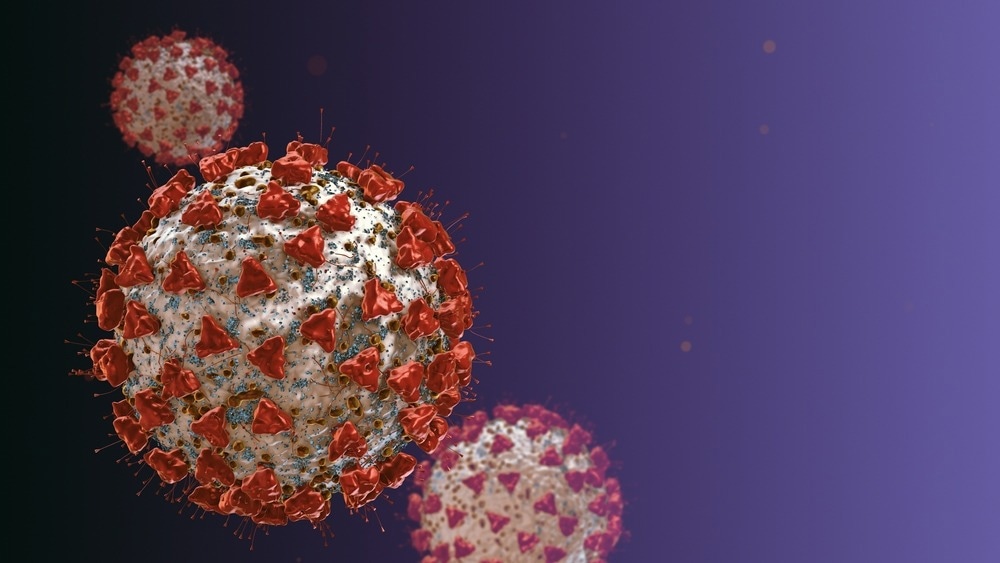In a recent study published in Vaccines, researchers evaluated immune responses by B lymphocytes to Pfizer’s severe acute respiratory syndrome coronavirus 2 (SARS-CoV-2) mRNA (messenger ribonucleic acid) vaccine.
 Study: Effects of Prior Infection with SARS-CoV-2 on B Cell Receptor Repertoire Response during Vaccination. Image Credit: Cinefootage Visuals/Shutterstock
Study: Effects of Prior Infection with SARS-CoV-2 on B Cell Receptor Repertoire Response during Vaccination. Image Credit: Cinefootage Visuals/Shutterstock
Background
Characterizing B lymphocyte responses to coronavirus disease 2019 (COVID-19) vaccines by prior SARS-CoV-2 exposure would deepen understanding of probable B cell memory use by vaccines. Higher somatic hypermutations (SHM) rates have been reported in response to natural SARS-CoV-2 infections but not vaccinations, indicative of different B cell receptor (BCR) responses to and natural infections. Common (or public) SARS-CoV-2 clonotypes have been reported among different persons, indicative of evolutionary convergence across the repertoires.
The authors of the present study previously reported that anti-SARS-CoV-2 S titers in response to SARS-CoV-2 vaccinations are higher among seropositive persons (with prior COVID-19 history) than seronegative persons (without prior COVID-19 history). However, the impact of prior SARS-CoV-2 exposure on the immune responses of BCR repertoire to COVID-19 vaccinations is unclear.
About the study
In the present study, researchers extended their previous analysis by comparatively assessing BCR repertoires of seropositive and seronegative persons to assess the impact of prior COVID-19 history on B lymphocyte responses to the Pfizer SARS-CoV-2 mRNA vaccine. They also explored potential BCR public clonotype elicitation by the vaccine.
Four seronegative and five seropositive health care workers (HCWs) were enrolled in the study. Prior SARS-CoV-2 exposure was confirmed by polymerase chain reaction (PCR) and occurred one to two months before the commencement of the study. Blood samples were obtained before vaccination and after 21 days of vaccination, post which sera and PBMCs (peripheral blood mononuclear cells) were used for antibody (Ab) titer determination and BCR sequencing, respectively. Immcantation analyses were performed to evaluate variable (V) gene use, heavy-chain complementarity determining region 3 (HCDR3) lengths, SHM rates, clonality, and convergence.
Fluorescent flow cytometry (FC)-based analyses were performed to determine Ab titers against the SARS-CoV-2 spike (S) protein subunits 1 (S1) and 2 (S2), nucleocapsid (N) protein, and the receptor-binding domain (RBD), with secondary Abs for isotypes immunoglobulin G (IgG), IgA, and IgM. IgG isotype-containing BCR sequences were analyzed for variable gene family (IGHV) use frequency and V gene use was assessed for IgM or IgA.
IgG repertoire divergence in response to vaccination was assessed using species richness, Simpson’s diversity index, and Shannon diversity index. Pre-existing IgG repertoire clones and the 50 most abundant IgG clones were further analyzed. IgG (from the previous infection) clonal expansion in response to vaccination was evaluated, and the V gene usage, SHM, and HCDR3 length of 28 convergent clones shared across all study participants were characterized. The COVID Ab database was referred to determine whether the convergent and expanded clones identified in the study were previously identified as SARS-CoV-2-specific clones.
Results
Vaccine-induced expanded IgG clonotypes had shorter HCDR3 lengths, and the expanded clonotypes had higher SHM rates for seropositive persons. Public clonotypes (n=28) were identified across all persons with higher SHMs and shorter HCDR3 than other clonotypes, indicative of convergent evolution due to vaccination irrespective of prior SARS-CoV-2 exposure. Serum titers of IgG, IgM, and IgA isotypes to SARS-CoV-2 S1, S2, RBD, and NP were detected with the lowest and highest titers for IgA and IgG, respectively, and the Ab titers were higher among seropositive persons at baseline.
Three weeks post-vaccination, seropositive IgG titers against S1, S2, and NP continued to be greater than seronegative titers; however, anti-S RBD IgG titers were identical. Anti-S2 IgM titers were greater among seropositive individuals, whereas IgG titers against RBD, NP and S1, RBD did not differ across serotypes. However, IgA titers did not differ significantly across serotypes for any SARS-CoV-2 antigen.
HCDR3 length distribution, global BCR isotype, and IGHV use were not altered by vaccination. IgM isotypes showed the highest frequency across serotypes (seropositive 67%, seronegative: 62%). IgG BCR sequences used IGHV3 at the highest frequency. V gene use frequency and HCDR3 lengths for IgM, and IgA in BCR sequences did not statistically differ across serotypes after 21 days of vaccination.
BCR SHM rates elevated post-vaccination among seropositive individuals and reduced among seronegative ones. Comparing IgG SHM rates at the two time points showed no difference in the fraction of clones with or <2 mutations or ≥2 mutations between the groups; however, SHM rates were greater for IgG sequences with ≥2 mutations among seronegative persons at both time points. BCR SHM in IgA rates significantly increased after three weeks of vaccination among seropositive but showed no significant difference among seronegative persons post-vaccination.
SHM patterns for IgM and IgG were similar. At the second time point, seropositive BCR clones showed greater Shannon diversity and species richness than seronegative ones. Both serotypes had pre-existing clonotypes that expanded post-vaccination; however, the repertoires were dominated by novel clones. Minimal overlapping was observed between the 50 most numerous IgG clonotypes 21 days post-vaccination and clones of any isotype at baseline.
The usage of the V gene by the 50 most abundant clones didn’t differ significantly from others across serotypes. HCDR3 lengths were significantly shorter in the top 50 BCR clones across serotypes and shorter than in other clones. SHM rates were greater among seropositive top 50 clones and other clones than their seronegative counterparts. Queried clonotypes showed three matches with the COVID-19 Ab database. Clones #34727 and #13327 matched to S-B8 and Fab-368 Ab, respectively, both of which could neutralize SARS-CoV-2. Clone #8269 matched several Ab targets but no SARS-CoV-2 neutralization.
Conclusion
To conclude, based on the study findings, persons with prior COVID-19 history had greater Ab titers after prime SARS-CoV-2 vaccination.